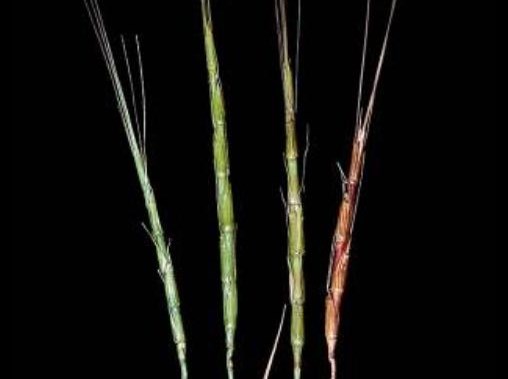Created by: Elizabeth D. Brusati
Created on: Thursday, Jan 21st, 2016
Created on: Thursday, Jan 21st, 2016
Yes or No:
Yes
Points:
1
Confidence Level:
Very High
Answer / Justification:
24 counties in CA (Calflora), Europe, N America.
Reference(s):
Yes or No:
Yes
Points:
2
Confidence Level:
Very High
Answer / Justification:
Naturalized in 24 counties in California. Also naturalized in most US states, including those similar to California.
Reference(s):
Yes or No:
Yes
Points:
2
Confidence Level:
High
Answer / Justification:
Listed as a noxious weed in California, Oregon, Washington, Colorado, Arizona. Mostly a problem in winter wheat. In Oregon, listed as affecting cereal crops and occasionally invading grasslands. Randall 2012 lists numerous areas of naturalization or agricultural problems. A couple citations in Randall from lists by the Nature Conservancy and National Parks but no information beyond the name.
Reference(s):
Yes or No:
Yes
Points:
3
Confidence Level:
High
Answer / Justification:
Listed as a noxious weed in California, Oregon, Washington, Colorado, Arizona. Mostly a problem in winter wheat. In Oregon, listed as affecting cereal crops and occasionally invading grasslands.
Reference(s):
Yes or No:
Yes
Points:
1
Confidence Level:
Very High
Answer / Justification:
Barbed goatgrass (Aegilops triuncialis) is an invasive plant in California and many other areas.
Reference(s):
Yes or No:
Yes
Points:
2
Confidence Level:
Very High
Answer / Justification:
Native to Mediterranean Europe and Western Asia. Found throughout the Western US.
Reference(s):
Yes or No:
No
Points:
0
Confidence Level:
Medium
Answer / Justification:
Hard to answer because it's mostly a weed in winter wheat and disturbed areas such as roadsides, although also in rangelands.
Reference(s):
Yes or No:
No
Points:
0
Confidence Level:
High
Answer / Justification:
Looked at several sources and none mention flammability in its impacts. Ditomaso et al. in California Agriculture article said that burning jointed goatgrass seeds prevented germination more so than in barbed goatgrass.
Reference(s):
Yes or No:
No
Points:
0
Confidence Level:
Very Low
Answer / Justification:
Livestock - invades fields and pastures (?) OR Dept of Ag says it invades rangelands.
Reference(s):
Yes or No:
No
Points:
0
Confidence Level:
Medium
Answer / Justification:
Doesn't sound like it. Grows 15 to 30 in tall. (But Invasive.org says it can grow 1.2m)
Reference(s):
Yes or No:
No
Points:
0
Confidence Level:
High
Answer / Justification:
Reproduces by seed.
Reference(s):
Yes or No:
No
Points:
0
Confidence Level:
High
Answer / Justification:
Reproduces by seed.
Reference(s):
Yes or No:
Yes
Points:
1
Confidence Level:
Very High
Answer / Justification:
Reproduces by seed
Reference(s):
Yes or No:
Yes
Points:
1
Confidence Level:
Very High
Answer / Justification:
Under typical field conditons with adequate moisture, one plant produces about 130 seeds, but isolated plants can produce as many as 3000 seeds.
Reference(s):
Yes or No:
Yes
Points:
1
Confidence Level:
Medium
Answer / Justification:
Grows as a winter annual and seeds germinate in the following fall, but some seeds can also germinate in the spring. Answering yes because the description implies that it is able to germinate as soon as conditions are favorable and does not need scarification or a similar process.
Reference(s):
Yes or No:
Yes
Points:
1
Confidence Level:
Very High
Answer / Justification:
Yes. Annual grass.
Reference(s):
Yes or No:
No
Points:
0
Confidence Level:
Medium
Answer / Justification:
"Long flowering period" but no specific time mentioned. Flowers May - June in California so answering no based on that information.
Reference(s):
Yes or No:
Yes
Points:
1
Confidence Level:
Very High
Answer / Justification:
Dispersed by livestock, especially sheep, as well as human activities
Reference(s):
Yes or No:
Yes
Points:
1
Confidence Level:
Very High
Answer / Justification:
Can be dispersed by water (joints float), and wind.
Reference(s):
Yes or No:
Yes
Points:
1
Confidence Level:
Very High
Answer / Justification:
Dispersed by vehicles, specifically by attaching to tires. Dispersed by farm equipment (Canada).
Reference(s):
Reviewed by Barbara Castro, CA Dept of Water Resources
USDA PLANTS: http://plants.usda.gov/core/profile?symbol=AECY
Direct link to Canadian factsheet: http://www.inspection.gc.ca/plants/plant-protection/invasive-plants/fact...
- < 13 : accept (low risk of invasiveness)
- 13 - 15 : evaluate further
- > 15 : reject (high risk of invasiveness)
PRE Score:
18
Number of questions answered:
20
Screener Confidence (%):
83.0
Organization:
Evaluation visibility:
Public - accessible to all site users

